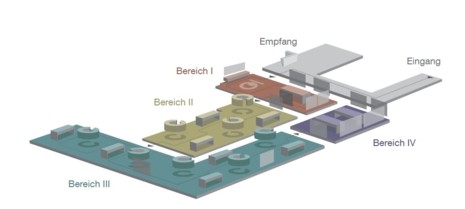The historical museum covering the time period between 1938 and 1945 is dedicated to the forced laborers under the NS regime. On a comparatively short path, we accompany those men and women who laid the foundation of a company that today has become a worldwide corporation.
New space has been created on the ground floor of corporate headquarters (Works Building 41). The newly designed space is a clear message that we place the topic of forced labor at the heart of our company. The exhibit was created to be permanently accessible by the public.
It was a high priority in the design phase to create an exhibit in remembrance of this period of time and to make it possible for individuals to personally come into contact with the past without being intimidated. The permanent exhibit is not a memorial nor a museum. It is rather a living reminder at the heart of the company.
The victims of forced labor during the NS regime in the Hermann Göring works in Linz are given a voice through audio documentation. Extensive explanations, images and multi-media-based stations accompany the visitor in remembering the forced laborers. 38,000 personnel files and salary slips from the Linz operations of Reichswerke Hermann Göring in the years from 1938 to 1945 form the basis of the exhibit.
The central element of design of the museum consists of eight illuminated columns that hang from the ceiling and are accessible from every angle. They function as a reminder of forced laborers whose voices can be heard from within. The precarious living situation of the workers is reflected in the fact that the illuminated columns are suspended in the air and are illuminated from within. The illumination is an invitation to focus on the memory of the persons and circumstances depicted in the exhibit. The shape of the illuminated columns is inspired by the logo of the Hermann Göring works. Information in the form of text, images and maps is printed on the exterior surface of the illuminated columns. Original documents are also on display in the showcases that are located at strategic positions throughout the exhibit and are equipped with digital stations and contain a wealth of additional information.
